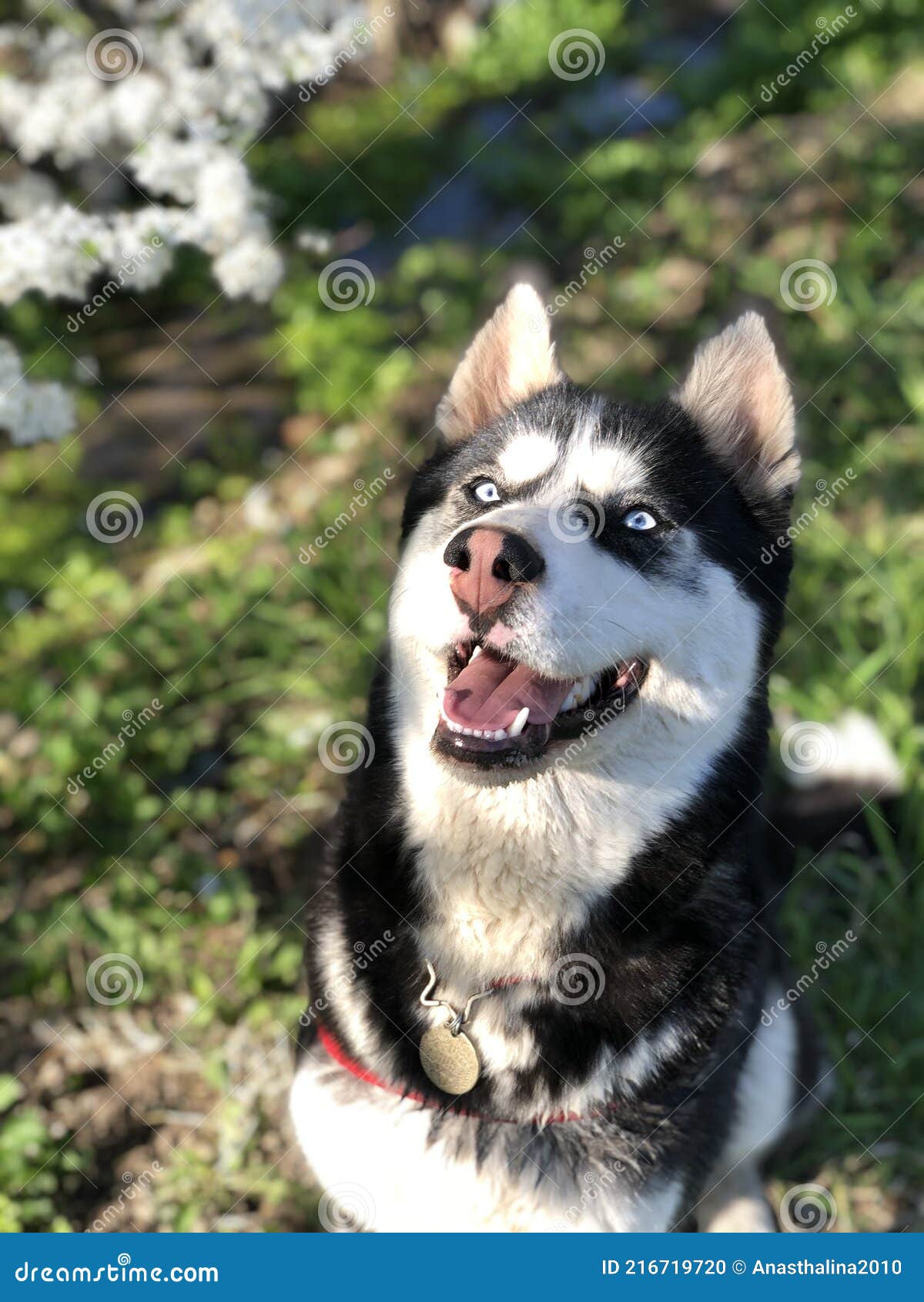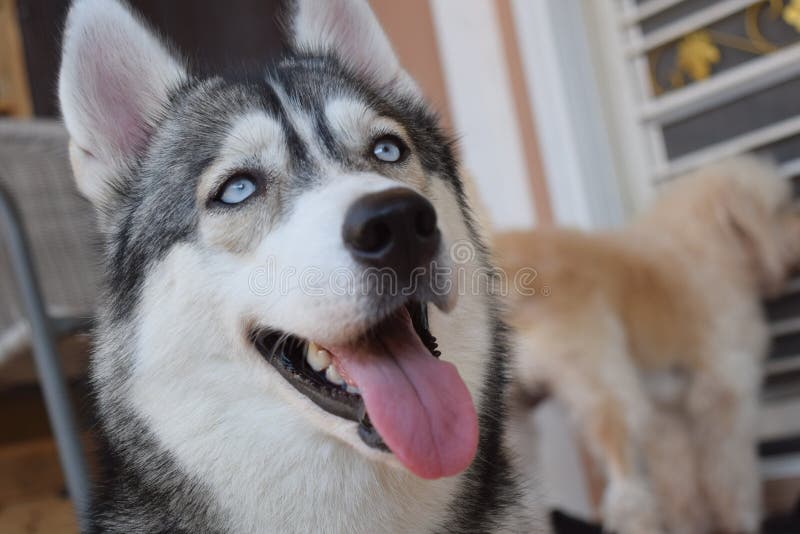Picture this: a snowy landscape, the crisp air nipping at your cheeks, and trotting alongside you is a stunning creature with piercing eyes, a thick coat, and a demeanor that screams both loyalty and mischief. Yup, we're talking about the Siberian Husky. These beauties aren’t just dogs—they’re works of art with hearts of gold. And let’s be honest, if you’re reading this, you’re probably already in love with them. But what makes the Siberian Husky so special? Let’s dive deep into the world of these Arctic wonders.
From their striking blue eyes to their boundless energy, the Siberian Husky has captured the hearts of dog lovers worldwide. But owning one isn’t all cuddles and photogenic moments. These pups come with a unique set of quirks that make them as challenging as they are charming. If you’re thinking about bringing a Husky into your life, or just want to learn more about them, you’re in the right place.
We’ll cover everything from their history and temperament to practical tips for raising and training these majestic creatures. So, grab a cup of coffee, sit back, and let’s explore the incredible world of the Siberian Husky. Because trust me, once you get to know them, you’ll understand why they’re more than just pets—they’re family.
Table of Contents
1. A Brief History of the Siberian Husky
2. Meet the Siberian Husky: A Biographical Overview
3. Temperament: Are Huskies the Right Fit for You?
4. Health Concerns Every Husky Owner Should Know
5. Grooming Tips for Your Fluffy Friend
6. Training Secrets: Turning Your Husky Into a Well-Behaved Companion
7. Diet and Nutrition: Fueling Your Husky for Optimal Health
8. Exercise Needs: Keeping Your Husky Active and Happy
9. Adopting a Siberian Husky: What You Need to Know
10. Famous Siberian Huskies: Celebrities Among Dogs
A Brief History of the Siberian Husky
The Siberian Husky’s story begins in the freezing lands of Northeast Asia, where the Chukchi people bred them as working dogs. These dogs were essential for survival, pulling sleds across vast snowy terrains and providing companionship to their human families. The Chukchi people cherished their Huskies not just as workers but as integral members of their communities.
In the early 20th century, the Siberian Husky made its way to Alaska, where it quickly gained fame for its endurance and speed in sled racing. The breed’s big moment came during the 1925 serum run to Nome, where a team of Huskies, led by the legendary Balto, delivered life-saving medicine through harsh winter conditions. This heroic journey cemented the Husky’s reputation as a reliable and courageous companion.
Today, Siberian Huskies are beloved family pets around the world, but they still carry the traits of their working ancestors. Their intelligence, strength, and independence make them fascinating yet challenging companions.
Meet the Siberian Husky: A Biographical Overview
Let’s break it down—here’s a quick snapshot of the Siberian Husky:
Biographical Data
| Scientific Name: | Canis lupus familiaris |
|---|---|
| Origin: | Siberia, Northeast Asia |
| Life Span: | 12–15 years |
| Weight: | 35–60 pounds |
| Height: | 20–24 inches |
| Coat: | Thick double coat |
| Colors: | Black and white, gray and white, red and white, pure white |
Siberian Huskies are medium-sized dogs with a striking appearance. Their thick double coat protects them from extreme cold, while their almond-shaped eyes—often blue or multi-colored—give them an ethereal look. These pups are built for endurance, with a muscular frame and a graceful gait.
Temperament: Are Huskies the Right Fit for You?
If you’re considering getting a Siberian Husky, you need to know what you’re signing up for. Huskies are known for their friendly and outgoing nature, but they’re also independent thinkers with a knack for mischief. They’re social animals who thrive on companionship, so if you’re looking for a dog that can be left alone all day, the Husky might not be the best choice.
Here’s a quick rundown of the Siberian Husky’s temperament:
- Intelligent: Huskies are quick learners, but their intelligence can sometimes lead to trouble. They love solving puzzles, but they also love finding creative ways to escape from yards or steal snacks.
- Playful: These dogs have a ton of energy and love to play. Whether it’s chasing a ball, running in the snow, or digging holes in the backyard, Huskies are always up for an adventure.
- Social: Huskies are pack animals, and they enjoy being around people and other dogs. They’re not aggressive and usually get along well with everyone, including strangers and other pets.
However, Huskies do have a mischievous streak. They’re known for their "Husky 500," a term used to describe their knack for escaping from seemingly secure enclosures. If you’re not prepared for a dog that thinks outside the box, the Husky might be more than you bargained for.
Health Concerns Every Husky Owner Should Know
While Siberian Huskies are generally healthy dogs, they’re not immune to health issues. As a responsible owner, it’s important to be aware of potential problems and take steps to prevent them. Some common health concerns in Huskies include:
Eye Problems
Siberian Huskies are prone to eye conditions such as cataracts and progressive retinal atrophy (PRA). Regular veterinary check-ups can help catch these issues early, ensuring your Husky’s vision stays sharp.
Hip Dysplasia
This genetic condition affects the hip joint and can cause pain and mobility issues. While it’s more common in larger breeds, Huskies can also be affected. A healthy diet and regular exercise can help reduce the risk.
Thyroid Issues
Huskies can develop hypothyroidism, a condition where the thyroid gland doesn’t produce enough hormones. Symptoms include weight gain, lethargy, and skin problems. Thyroid issues can be managed with medication, so if you notice any changes in your Husky’s behavior or appearance, consult your vet.
Grooming Tips for Your Fluffy Friend
Let’s talk about that glorious coat. Siberian Huskies have a thick double coat that sheds like crazy, especially during shedding season. While it might seem overwhelming, with the right tools and techniques, grooming your Husky can be a breeze.
- Brush Regularly: A good brushing session two to three times a week will help remove loose hair and keep your Husky’s coat shiny and healthy.
- Bathe When Necessary: Huskies don’t need frequent baths, as their coat has natural oils that keep it clean. Over-bathing can strip these oils, so stick to a bath every few months unless your Husky gets particularly dirty.
- Trim Nails and Clean Ears: Don’t forget about the basics! Regular nail trimming and ear cleaning are essential for your Husky’s overall health.
Grooming is not just about keeping your Husky looking good—it’s also a bonding experience. Plus, it gives you a chance to check for any signs of skin irritation or other health issues.
Training Secrets: Turning Your Husky Into a Well-Behaved Companion
Training a Siberian Husky can be a rewarding but challenging experience. These dogs are intelligent, but they can also be stubborn. Here are some tips to help you train your Husky effectively:
Start Early
Puppies are like sponges—they soak up everything they learn. Start training your Husky as soon as you bring them home. Basic commands like "sit," "stay," and "come" are essential and should be taught early on.
Be Consistent
Huskies thrive on routine. Use the same commands and rewards consistently, so your pup knows what’s expected of them. Inconsistency can confuse your dog and make training more difficult.
Use Positive Reinforcement
Reward-based training works wonders with Huskies. Treats, praise, and playtime are great motivators. Avoid punishment, as it can lead to fear and anxiety in your dog.
Diet and Nutrition: Fueling Your Husky for Optimal Health
Feeding your Siberian Husky a balanced diet is crucial for their health and well-being. These dogs have high energy levels, so they need a diet that provides the right nutrients to keep them going.
- High-Quality Protein: Huskies need plenty of protein to maintain their muscles and energy levels. Look for dog food that lists a high-quality protein source as the first ingredient.
- Healthy Fats: Fats are essential for maintaining a healthy coat and skin. Fish oil and chicken fat are great sources of healthy fats for your Husky.
- Carbohydrates: While Huskies don’t need a lot of carbs, they do benefit from complex carbs like sweet potatoes and brown rice, which provide sustained energy.
Always consult with your vet to determine the best diet for your Husky, especially if they have specific health needs.
Exercise Needs: Keeping Your Husky Active and Happy
Siberian Huskies are bundles of energy, and they need plenty of exercise to stay happy and healthy. A bored Husky is a mischievous Husky, so make sure you’re providing enough physical and mental stimulation.
Daily Walks
A brisk walk or jog every day is a great way to burn off some of that Husky energy. Just be careful not to overexert them, especially in hot weather, as Huskies can overheat easily.
Mental Challenges
Puzzle toys and interactive games can keep your Husky’s mind sharp and prevent boredom. These activities are especially important if your Husky spends a lot of time indoors.
Adopting a Siberian Husky: What You Need to Know
Adopting a Siberian Husky is a big decision, and there are a few things you should consider before taking the plunge. Huskies require a lot of time, energy, and resources, so it’s important to make sure you’re ready for the commitment.
Space and Environment
Huskies need space to run and play. If you live in an apartment or have a small yard, you’ll need to make extra effort to ensure your Husky gets enough exercise. A securely fenced yard is essential, as Huskies are known escape artists.
Time and Attention
Huskies are social animals and thrive on companionship. If you work long hours or travel frequently, you might want to reconsider adopting a Husky. They can develop separation anxiety if left alone for too long.
Famous Siberian Huskies: Celebrities Among Dogs
Huskies have made their mark in popular culture, from heroic sled dogs to Instagram influencers. Here are a few famous Siberian Huskies you might recognize:
Balto
Arguably the most famous Husky of all time, Balto led the sled team that delivered life-saving medicine to Nome, Alaska, in 1925. A statue of Balto stands in Central Park, New York, commemorating his bravery.
Toki
Toki is a Siberian Husky who gained fame on social media for her stunning blue eyes and adventurous spirit. With over a million followers, Toki has become a symbol of Husky beauty and charm.
In conclusion, Siberian Huskies are incredible dogs with a rich history and unique

![แม่ผมคือคนที่ผมรัก [Boindo (Siberian Hahasky)] Boku no Kaasan de](https://img.doujinmoon.com/manga/obmnda3deqkhvqr86v/pndkthmrqvumvnmr/3.jpg)
